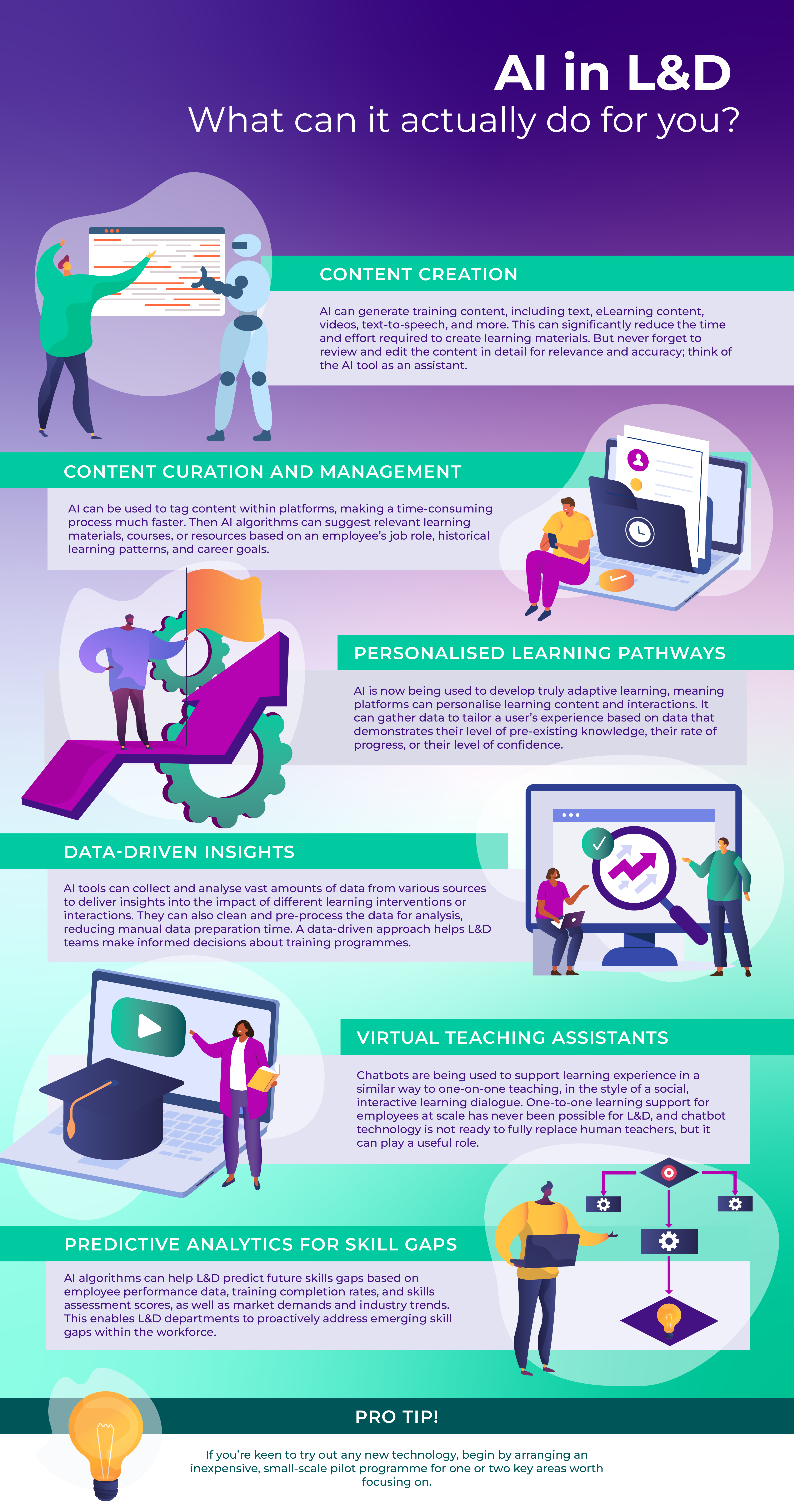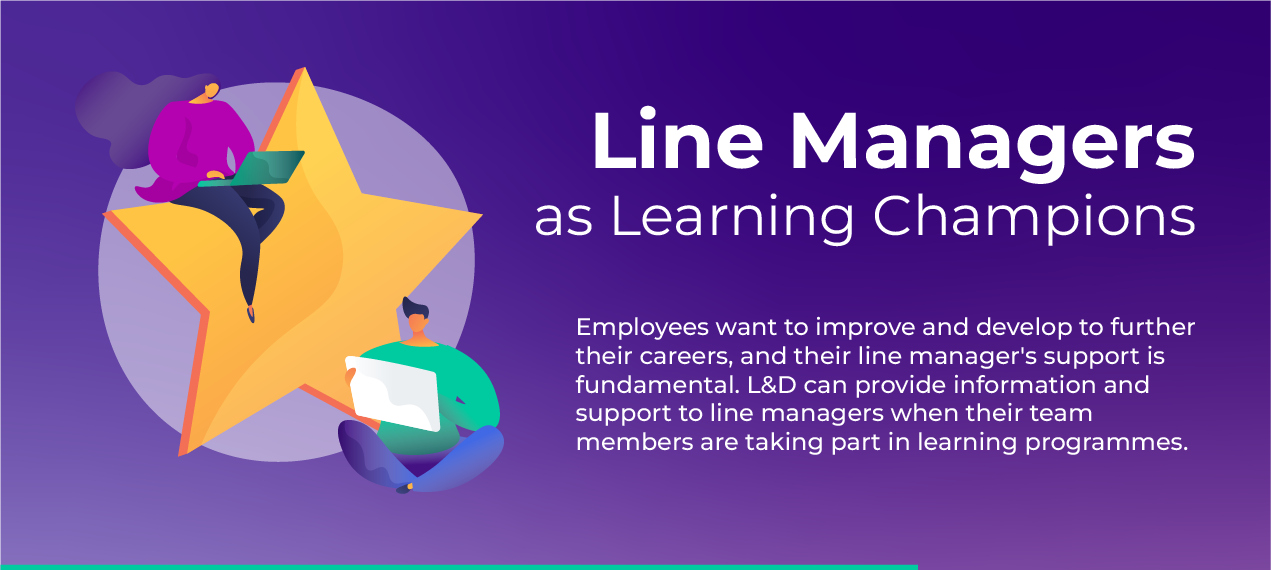- Do you actually have a learning strategy, or is it a learning plan?
- Where do you go for your information?
- What do you want your L&D function to stand for?
- How do you demonstrate your value?
- Who are your trusted partners that will help you deliver?
1: Do you actually have a learning strategy, or is it a learning plan?
So if you're planning for 2025, what's the business plan for 2025? Find out about the growth plans, the headcount plans, the skills that the organisation is going to need in 2025, and align your plan to these.
2: Where do you go for your information?
KEY POINT: We need to read our professional journals to keep up to speed on what’s happening in our industry and advance in our field, but we have to read the business journals and papers that tell us about the macro-economic trends and advance on delivering the business need.
3: What do you want your L&D function to stand for?
Within your strategy, or plan, how are you positioning your function? Do you want to be the police, all about governance over who’s done their compliance training, or do you see that as table stakes that will take care of themselves (when managers are empowered to manage the compliance) and focus instead on building organisational competence in the skills needed?
The classic thing that we then do as an L&D team with organisational competence is we spend months and a lot of money building a competency map and a competency framework, interviewing everyone and asking them what skills they need for the future.
What we could do is look at things like the World Economic Forum and their Learning Taxonomy and see if we can leverage the generic work they’ve done. It might not be a perfect match, but it might be good enough. And so our real challenge as an L&D function is to convince the business that it doesn’t need to spend hundreds of thousands on a perfect Sales programme, or an Engineering Academy, or a Leadership model – we can decide what is good enough for our organisation to achieve the goals it wants over the next 12 months.
I grew up in the Manufacturing industry, which was all about TQM – Total Quality Management. How can we incorporate TQM ideas around policy, procedures, and work instructions in how we might manage our L&D function?
Firstly, what’s your learning policy? What are you telling the organisation you’re going to do? What are the statements you’re going to make or targets you’re going to set?
Then secondly, what are the procedures you’ll follow to govern and deliver that service? Will it be governed from the centre or governed as a consensus? I’ve always preferred to influence, rather than control – ask someone to do something, rather than tell them – and so L&D can demonstrate its value by supporting the business units, rather than telling the business units what to do.
Thirdly, think about your work instructions and how you’ll get things done. In other words, what are the systems you’ll use to deliver? It might be your LMS, or other learning platforms, or your catalogue, or your general product portfolio and how it’s managed.
And the last thing is about delivery – how do you go to market, to the business and to the learners, with your product or your services?
KEY POINT: Think about how your L&D function is set up to solve the problems you want to solve, whether it’s policy, procedure, work instructions or delivery vehicles – know where it is in the organisation that you are playing.
4: How do you demonstrate your value?
When it comes to demonstrating the value you bring to a business, you need to ‘read the room’. What I mean by that is you’ve got to think about the audience that you’re trying to talk to and whether they’re going to appreciate the value of what you deliver. You need to talk their language, but also to find where your voice will be heard, rather than trying to create this false sense of value that many of us are striving for.
It’s become a bit of an obsession In L&D to think we have to prove ROI. In 25+ years of working in L&D, I’ve yet to have anybody knock on my door and say, ‘could you do an ROI study for me, Tony, please?’ That's a Master's degree in itself to do a full ROI study! Prove your value in a different way; how will you get heads of business to keep knocking on your door wanting to work with you? How often they come to you and ask you for help is a real indicator of impact and value.
So, rather than ROI, you might be asked to demonstrate your impact, which is very different. The way I see it is that the value that we bring, in L&D, can be categorized in two ways; value creation and value capture. So, am I creating new value for the organisation, where value didn't exist before, or am I capturing value for them which is saving them money, because we need to be more efficient and more effective at what we’re doing?
If I’m creating new value, then I need to use new metrics to help me measure that value – these could be business turnover rates, engagement surveys, sales cycles, time to market, and I can quantify those things because the business is measuring them. If I’m capturing value, then the business will ask if I’ve saved it money. So now, I’m introducing a report that talks about impact, not necessarily about a quantifiable ROI on where the investment was.
The other thing L&D don’t do enough of is ask the business to specify the impact it wants and the metrics that will demonstrate it. For instance, if you have a request to build an Academy from a business leader, ask the business leader what good looks like and how will they define success. Otherwise, you could end up measuring impact based on the volume of people that go through it and at the end of the year, the business leader isn’t happy, because you haven’t measured what they were looking for.
We often confuse learning with training – often the training means to go on a course, but the actual learning happens through conversation, which is the application of the training. So, rather than L&D being about courses and ticking boxes, how can you create the space for conversation? How can you show the value proposition of an hour in people’s diaries for those informal conversations that we would have had at the coffee machine? Our learning/training portfolio is our Achilles’ heel, because people expect us to deliver more courses, when the reality is, we probably need fewer courses and better discussion. In today’s hybrid world, we need to create the opportunity for quality conversation, to share knowledge and for experiential learning to happen.
KEY POINT: Are you creating new value for the organisation where value didn't exist before, or are you capturing value for the organisation that will save it money by being more efficient and effective. Find the right metrics to measure the impact you want to make.
5: Who are your trusted partners that will help you deliver?
There are so many people out there claiming to be experts, offering you consultancy. But who are the trusted advisors that you, as a head of L&D, are going to work with? Who is the external provider that can help you deliver on your strategy or plan? How are they keeping up to date with the trends? What's the information your preferred partner is giving you about AI, VR, AR, all the current buzzwords in the learning industry. How is your learning provider helping you to stay ahead of the game? You’ll want people who understand what you’re trying to achieve, but who will also challenge you and your thinking.
Your external partner should be somebody who is going to roll their sleeves up at 5 o'clock on a Friday evening, that’s going to come to your rescue and say... ‘don't worry about it, we'll get that fixed for you.’
KEY POINT: Create your external network of trusted partners and suppliers and play to their strengths, so as you get the support you need.
To sum up..
- What is your L&D strategy? If you're trying to solve system problems, it's going to be a two to three-year journey. If you're trying to solve current problems, it's in your plan. Be able to differentiate.
- Be aware of your sources of information, and make sure you include the business journals, consultants, and other sources that will help you support your business and its strategy.
- How is your L&D system set up to solve these problems, whether it's your policy, procedure, work instructions or delivery vehicles? You've got to look at where you are playing within the organisation.
- What conversations are you looking to have about the value and impact that the L&D team is bringing, and how are you measuring that impact differently?
- Who can you trust (your providers) to help you achieve what you’ve said you’ll do?
What’s the No.1 non-negotiable in your learning strategy this year? Let us know! And if you want to explore any of the points above, come and talk to us today about quick wins that result in big impacts!







Was this article helpful?